It looks like you're using an Ad Blocker.
Please white-list or disable AboveTopSecret.com in your ad-blocking tool.
Thank you.
Some features of ATS will be disabled while you continue to use an ad-blocker.
share:
originally posted by: bloodymarvelous
It's interesting that the GP is known for its 5 ton blocks, and 5 tons is about the weight of a mammoth carcass.
Really?
Why do you think this?
Harte
Well you know how the saying goes: necessity is the mother of invention.
So if I had to guess which of two cultures moved a 5 ton block, would I go with the one that has no economic reason to need to know how to move objects of that size?
Or the culture that has every reason to need to know how to move objects of that size?
People in the ice age weren't stupid. Just complacent. Their lifestyle wasn't broke, so why fix it?
So if I had to guess which of two cultures moved a 5 ton block, would I go with the one that has no economic reason to need to know how to move objects of that size?
Or the culture that has every reason to need to know how to move objects of that size?
People in the ice age weren't stupid. Just complacent. Their lifestyle wasn't broke, so why fix it?
edit on 21-5-2022 by
bloodymarvelous because: (no reason given)
originally posted by: bloodymarvelous
Well you know how the saying goes: necessity is the mother of invention.
So if I had to guess which of two cultures moved a 5 ton block, would I go with the one that has no economic reason to need to know how to move objects of that size?
Or the culture that has every reason to need to know how to move objects of that size?
People in the ice age weren't stupid. Just complacent. Their lifestyle wasn't broke, so why fix it?
I don't see what point you're trying to make here.
Are you saying the Egyptians had no reason to know how to move a five ton stone, while Ice Age hunter-gatherers did?
How does that make sense?
Do you actually believe Ice Age people were dragging mammoths around?
Are you aware of the evidence of butchering mammoth carcasses that has been found?
Harte
Experience in the 19th and early 20th century found that while the wind made the use of floating 'airships or balloon' viable in some aspects. In most
cases it was also unworkable due to wind.Wind could move thousands of ton worth of wooden ships thru water and it will move balloons too the problem
is in which direction and control of that movement. We don't use airships for much these days because of power of the wind and we have modern
engines.The AE did not, the same argument against kites etc.
Control or a lack of it. Oh and Scott wrote that 12 years ago
Control or a lack of it. Oh and Scott wrote that 12 years ago
edit on 23/5/22 by Hanslune because: (no reason given)
originally posted by: Blackmarketeer
The Westcar Papyrus relates of tales told at Khufu's court. It's thought to have been written in the Middle Kingdom (around the 12th dynasty), some 500 years after Khufu. That should give you some indication how profound an impact Khufu had on Egypt, that unlike most Pharaohs, they were still telling tales of him hundreds of years past his death. Then again, Khufu was more than just a god-king, typical of the other Pharaohs. He declared himself the god, Re, in the living flesh. The Inventory Stela (664-524 BC) was written in the Late Period, nearly 2,000 years after his death, by the Cult dedicated to Khufu as a God. It may be written by the priests of the 26th Dynasty in accordance with what they believed of the 4th Dynasty - and not a factual record of the man's accomplishments. Is it possible they separated Khufu, the Pharaoh, from Re, the God? Think of how nutty Christianity gets around the subject of the "transfiguration", Khufu/Re may be a prelude of that line of convoluted thinking. It might help explain why his pyramid went a step above the others. But even so - his pyramid shared many traits found in those of the Old Kingdom as well - Sneferu's bent pyramid, the North Pyramid, and those of his son.
I missed this on my first read through!
If Khufu was claiming to be a god, and that god was older than him, then finding a cartouche that says "Khufu" doesn't necessarily prove him to be the builder. It could prove instead that the structure was originally constructed in honor of that god.
It also means he can reappropriate it if he wants to, since he's claiming its his anyway.
originally posted by: Harte
originally posted by: bloodymarvelous
Well you know how the saying goes: necessity is the mother of invention.
So if I had to guess which of two cultures moved a 5 ton block, would I go with the one that has no economic reason to need to know how to move objects of that size?
Or the culture that has every reason to need to know how to move objects of that size?
People in the ice age weren't stupid. Just complacent. Their lifestyle wasn't broke, so why fix it?
I don't see what point you're trying to make here.
Are you saying the Egyptians had no reason to know how to move a five ton stone, while Ice Age hunter-gatherers did?
How does that make sense?
Do you actually believe Ice Age people were dragging mammoths around?
Given the evidence that many of them lived, at least seasonally, in not-movable dwellings such as caves, yes. They must have been moving the carcass to the cave.
During Winter, you've got natural refrigeration, so you can butcher the animal a little at a time. But moving your camp during winter is impractical.
Plus, after you dry them out, the bones make good firewood.
minds.wisconsin.edu...#:~:text=Using%20dry%20bones%20and%20grass,the%20fire %20has%20enough%20energy.
Are you aware of the evidence of butchering mammoth carcasses that has been found?
Harte
The fact they did that sometimes doesn't mean they always did that. And I don't know of any sites where they did that for just one kill.
If there are enough kills to be worth changing your methods, then you change your methods, as always.
a reply to: Blackmarketeer
The DDC is the only method that can build a structure like the GP
It can build the Gran Gallery and other chambers with the use of the
simplest of machines SAND... and meet all the criteria needed to
to be studied and excepted as a possible pyramid construction method..
Dig Down Concept
The DDC is the only method that can build a structure like the GP
It can build the Gran Gallery and other chambers with the use of the
simplest of machines SAND... and meet all the criteria needed to
to be studied and excepted as a possible pyramid construction method..
Dig Down Concept
originally posted by: bloodymarvelous
originally posted by: Blackmarketeer
The Westcar Papyrus relates of tales told at Khufu's court. It's thought to have been written in the Middle Kingdom (around the 12th dynasty), some 500 years after Khufu. That should give you some indication how profound an impact Khufu had on Egypt, that unlike most Pharaohs, they were still telling tales of him hundreds of years past his death. Then again, Khufu was more than just a god-king, typical of the other Pharaohs. He declared himself the god, Re, in the living flesh. The Inventory Stela (664-524 BC) was written in the Late Period, nearly 2,000 years after his death, by the Cult dedicated to Khufu as a God. It may be written by the priests of the 26th Dynasty in accordance with what they believed of the 4th Dynasty - and not a factual record of the man's accomplishments. Is it possible they separated Khufu, the Pharaoh, from Re, the God? Think of how nutty Christianity gets around the subject of the "transfiguration", Khufu/Re may be a prelude of that line of convoluted thinking. It might help explain why his pyramid went a step above the others. But even so - his pyramid shared many traits found in those of the Old Kingdom as well - Sneferu's bent pyramid, the North Pyramid, and those of his son.
I missed this on my first read through!
If Khufu was claiming to be a god, and that god was older than him, then finding a cartouche that says "Khufu" doesn't necessarily prove him to be the builder. It could prove instead that the structure was originally constructed in honor of that god.
Khufu's name wasn't actually "Khufu."
It was Khnum Khufu - "Khnum Protect Me.
The older god is Khnum - a fertility god from the 1st Dynasty.
The name found was Khnum Khufu - AND each time inside a cartouche.
I take it you know what that means.
Harte
originally posted by: Harte
originally posted by: bloodymarvelous
...
If Khufu was claiming to be a god, and that god was older than him, then finding a cartouche that says "Khufu" doesn't necessarily prove him to be the builder. It could prove instead that the structure was originally constructed in honor of that god.
Khufu's name wasn't actually "Khufu."
It was Khnum Khufu - "Khnum Protect Me.
The older god is Khnum - a fertility god from the 1st Dynasty.
The name found was Khnum Khufu - AND each time inside a cartouche.
I take it you know what that means.
Well: Khnum is perhaps best described as a ram-god and creator-god rather than a fertility-god. Khnum-Khufu was the king's full name, while Khufu was the shorter version.
Several other names of Khufu were discovered in the relieving chambers of the GP (there is also an example on the backing-stones, and further examples in the second boat-pit).
The reason for their presence was that different cartouche names formed part of the names of the different construction crews (one such team being Ḫwfw śmrw ˤpr, Khufu Semeru aper, “The gang (or crew) Companions of Khufu” - "Khufu's Mates"). The various construction crews were responsible for different sections of the work. (For more information, see Ann Macy Roth, 125.)
originally posted by: Hooke
originally posted by: Harte
originally posted by: bloodymarvelous
...
If Khufu was claiming to be a god, and that god was older than him, then finding a cartouche that says "Khufu" doesn't necessarily prove him to be the builder. It could prove instead that the structure was originally constructed in honor of that god.
Khufu's name wasn't actually "Khufu."
It was Khnum Khufu - "Khnum Protect Me.
The older god is Khnum - a fertility god from the 1st Dynasty.
The name found was Khnum Khufu - AND each time inside a cartouche.
I take it you know what that means.
Well: Khnum is perhaps best described as a ram-god and creator-god rather than a fertility-god. Khnum-Khufu was the king's full name, while Khufu was the shorter version.
Several other names of Khufu were discovered in the relieving chambers of the GP (there is also an example on the backing-stones, and further examples in the second boat-pit).
The reason for their presence was that different cartouche names formed part of the names of the different construction crews (one such team being Ḫwfw śmrw ˤpr, Khufu Semeru aper, “The gang (or crew) Companions of Khufu” - "Khufu's Mates"). The various construction crews were responsible for different sections of the work. (For more information, see Ann Macy Roth, 125.)
I'm aware of all of that.
It appeared that bloodymarvelous was not.
Harte
originally posted by: Harte
originally posted by: Hooke
originally posted by: Harte
...
I'm aware of all of that.
It appeared that bloodymarvelous was not.
Harte
Apologies, Harte.
I should probably have formatted my reply to bloodymarvelous, rather than to you.
Meh.
As long as the information gets out there.
Harte
Yes, if it gets out there and someone takes the time to find it! One of the main problem with fringe thinking is it rarely fully researches what is known about 'x' and also as a 'method' ignore anything about 'x' that doesn't already agree with your own - strongly held - beliefs.
originally posted by: Hooke
originally posted by: Harte
originally posted by: bloodymarvelous
...
If Khufu was claiming to be a god, and that god was older than him, then finding a cartouche that says "Khufu" doesn't necessarily prove him to be the builder. It could prove instead that the structure was originally constructed in honor of that god.
Khufu's name wasn't actually "Khufu."
It was Khnum Khufu - "Khnum Protect Me.
The older god is Khnum - a fertility god from the 1st Dynasty.
The name found was Khnum Khufu - AND each time inside a cartouche.
I take it you know what that means.
Well: Khnum is perhaps best described as a ram-god and creator-god rather than a fertility-god. Khnum-Khufu was the king's full name, while Khufu was the shorter version.
Several other names of Khufu were discovered in the relieving chambers of the GP (there is also an example on the backing-stones, and further examples in the second boat-pit).
The reason for their presence was that different cartouche names formed part of the names of the different construction crews (one such team being Ḫwfw śmrw ˤpr, Khufu Semeru aper, “The gang (or crew) Companions of Khufu” - "Khufu's Mates"). The various construction crews were responsible for different sections of the work. (For more information, see Ann Macy Roth, 125.)
I don't know what I make of the two cartouches in "Campbell's Chamber"
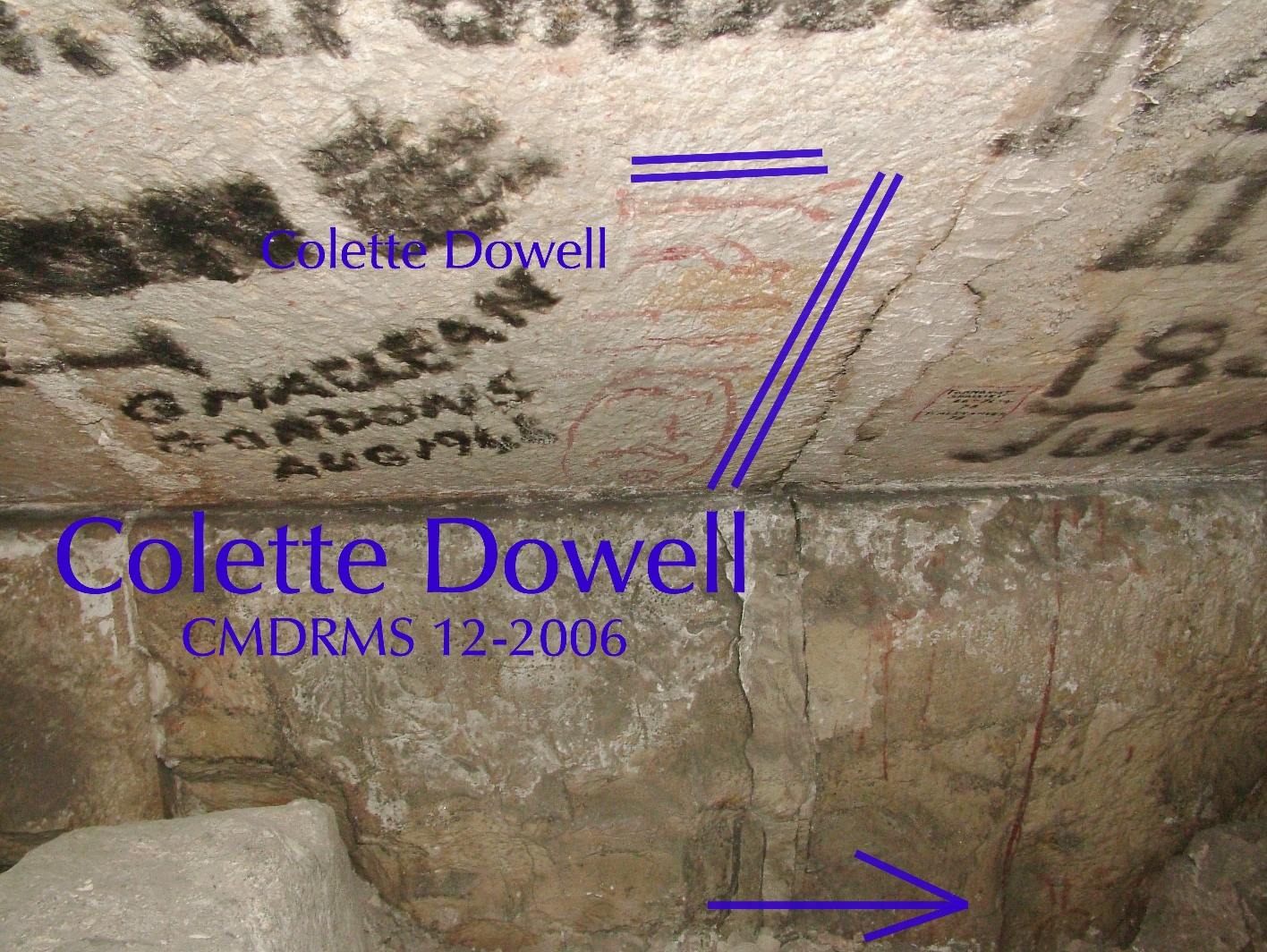
www.robertschoch.net...
So many people have put their personal graffiti into that chamber in the last couple centuries, that it wouldn't surprise me for someone to put graffiti there at the time of construction.
A simple cartouche that only contains some group's name can mean whatever the reader imagines it to mean. It *could* mean that is who moved the block. Or it could mean they were part of the project and that was a good place to write their name.
This is the area where archaeology gets frustrating, and begins to break down as a science. A person with a lot of reputation stakes their reputation on a blind guess. Adds meaning to text or markings that isn't necessarily contained in that text or marking. Nobody is allowed to disagree with the guess, because it would be a personal insult toward that person with a lot of reputation.
While I want to show respect toward these people who do hard work helping to preserve history (and I would never want these sites excavated by anyone else). I don't want to shape my personal beliefs around their guesses.
edit on 21-6-2022 by bloodymarvelous because: I
originally posted by: bloodymarvelous
I don't know what I make of the two cartouches in "Campbell's Chamber"
...
The characters spelling out "Khufu" appear within the cartouche; the other characters accompanying it, but not inside the cartouche itself, spell out "aper" (work team or gang), and "semeru", "friends." So, not two cartouche names: but "(Gang) Friends of Khufu," a crew with responsibility for one particular section inside the relieving chambers (as shown in Roth, 126.
So many people have put their personal graffiti into that chamber in the last couple centuries, that it wouldn't surprise me for someone to put graffiti there at the time of construction.
I think it's highly regrettable that anyone in the modern era wrote anything at all in the relieving chambers: the original crew-marks are historical artefacts, should have been treated as such, and left completely alone. However, when Vyse opened the chambers up in 1837, he asked Hill to inscribe 19th cent. names that he had chosen for the chambers (Campbell, Wellington, etc.) inside them: which Hill did, avoiding overwriting the ancient crew-marks. Then, in the early 20th century, other visitors (including "Sister Martin") also added their names: although, again, avoiding overwriting the ancient crew-marks.
There do exist photographs of Campbell's Chamber pre-dating the early 20th century graffiti. And the photograph by Patrick Chapuis ("The Strange Journey of Humphries Brewer", Stower and Coburn 2019, Pt I, Figs. 4 and 5) shows a representation of the cartouche name in question that is much clearer than the Dowell and Schoch image.
A simple cartouche that only contains some group's name can mean whatever the reader imagines it to mean.
No work-team's name appears inside a cartouche: that was a privileged reserved for royalty. The aper name and character appear alongside. A present-day reader's imagination has no part to play in interpreting this team-name.
It *could* mean that is who moved the block. Or it could mean they were part of the project and that was a good place to write their name.
The fact that various crew-marks appear upside-down, or are not completely visible, is a good indication that the names were not painted on the blocks inside the chambers, but were instead placed on them during some preceding stage of the construction as an indication of which set of blocks were to be moved and/or put in place by which team.
This is the area where archaeology gets frustrating, and begins to break down as a science. A person with a lot of reputation stakes their reputation on a blind guess. Adds meaning to text or markings that isn't necessarily contained in that text or marking. Nobody is allowed to disagree with the guess, because it would be a personal insult toward that person with a lot of reputation.
While I want to show respect toward these people who do hard work helping to preserve history (and I would never want these sites excavated by anyone else). I don't want to shape my personal beliefs around their guesses.
What on earth does this mean? Where and what is this "blind guess", and who is supposed to have made it? If you're referring to Roth, she didn't "guess": she examined information that (as described in "Strange Journey") had been previously discussed by the likes of Lepsius, Sethe and Reisner, and, having analysed it, saw that there was a pattern, and used it to come up with a theory about how labour was organised in the Old Kingdom.
It's always possible that, at some point, someone, on the basis of further information, might come up with another theory about the organisation of labour in the Old Kingdom: in which case Roth's theories might be sidelined.
But, TBMK, this hasn't happened so far.
originally posted by: bloodymarvelous
A simple cartouche that only contains some group's name can mean whatever the reader imagines it to mean. It *could* mean that is who moved the block. Or it could mean they were part of the project and that was a good place to write their name.
I'd like to add to what Hooke had to say in his excellent post.
What you are doing here is taking one, single example of Khufu's name in one chamber and the accompanying work gang-related text, and utterly ignoring the fact that there are other areas and chambers where these cartouches actually disappear into the floor or ceiling. In gaps between stones in some chambers, a flashlight reveals hieroglyphic writing on stone surfaces that were never even exposed inside the chamber.
When you ignore what is known, then you can say "it could mean they were part of the project and that was a good place to write their name..."
When you don't ignore the material that is known, then if you say "it could mean they were part of the project and that was a good place to write their name" you're just being stupid.
originally posted by: bloodymarvelousThis is the area where archaeology gets frustrating, and begins to break down as a science. A person with a lot of reputation stakes their reputation on a blind guess. Adds meaning to text or markings that isn't necessarily contained in that text or marking. Nobody is allowed to disagree with the guess, because it would be a personal insult toward that person with a lot of reputation.
People that disagree in this particular instance are people that are ignorant of the facts that are known, as I just demonstrated above.
If you think disagreement is not allowed in Egyptology, then you are far worse off than I had feared.
I hope you realize that the most respected Egyptologists in the history of the field had the dates wrong for Giza, and couldn't read hieroglyphic text either.
So, what happened there, since "no one can disagree?"
Harte
originally posted by: Hooke
But, TBMK, this hasn't happened so far.
Excellent answer and may I just add we have one such mark from outside that area and in the core.
Grinsell-Goyon mark.
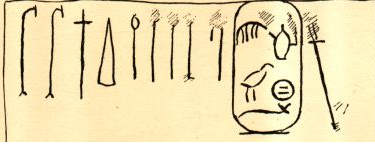
Goyon and Ginsells builders mark. Khufu’s name on backing stones found in 1947. Grinsell and Goyon noted this crew's name on Khufu pyramid located on an exposed core blocks (although Goyon provides an illustration): 4th course, west face, 71st stone on leaving the north angle.
From Egyptian Pyramids, Leslie Valentine Grinsell Egyptian Pyramids Leslie Valentine Grinsell
edit on 22/6/22 by Hanslune because: (no reason
given)
Interestingly, the stone we find the mark on is actually made of limestone instead of granite. And its design is similar to some other
"Saddled roof" architecture that was done a bit later.
In fact, apparently the same work crews' names appear in parts of another later pyramid: the Pyramid of Sahure, which features "saddled roof" architecture.
en.wikipedia.org...
en.wikipedia.org...
The inscriptions only appear on limestone blocks. This could be because the ochre didn't adhere to the granite blocks well enough to last the ages.
Or it could be because the limestone was added by Khufu to an original structure that was primarily granite.
But if so, then Khufu's ability to lift heavy stones must have been equal to that of the original builders, because those stones that form the top of Campbell's Chamber look to be pretty massive.
If Khufu had the ability to lift them, then I guess he would have had the ability to build all of it (remaining skeptical of the 40 year timespan, though...) Indeed, it seems unlikely the Campbell's Chamber roof stones would stay in place without the rest of the Pyramid's structure to hold them there.
So I guess there are reasons beyond the Cartouche to believe those stones were put there by Khufu.
Since they are limestone, if they were the structure's original roof, or otherwise an exterior element, and it were thousands of years older than Khufu, having existed through the region's wet phase, they would show signs of weathering. But they look really smooth, so probably they haven't been weathered.
In fact, apparently the same work crews' names appear in parts of another later pyramid: the Pyramid of Sahure, which features "saddled roof" architecture.
en.wikipedia.org...
en.wikipedia.org...
The inscriptions only appear on limestone blocks. This could be because the ochre didn't adhere to the granite blocks well enough to last the ages.
Or it could be because the limestone was added by Khufu to an original structure that was primarily granite.
But if so, then Khufu's ability to lift heavy stones must have been equal to that of the original builders, because those stones that form the top of Campbell's Chamber look to be pretty massive.
If Khufu had the ability to lift them, then I guess he would have had the ability to build all of it (remaining skeptical of the 40 year timespan, though...) Indeed, it seems unlikely the Campbell's Chamber roof stones would stay in place without the rest of the Pyramid's structure to hold them there.
So I guess there are reasons beyond the Cartouche to believe those stones were put there by Khufu.
Since they are limestone, if they were the structure's original roof, or otherwise an exterior element, and it were thousands of years older than Khufu, having existed through the region's wet phase, they would show signs of weathering. But they look really smooth, so probably they haven't been weathered.
originally posted by: bloodymarvelous
Interestingly, the stone we find the mark on is actually made of limestone instead of granite. And its design is similar to some other "Saddled roof" architecture that was done a bit later.
Why is that "interesting?"
99.99% of khufu's tomb is made of limestone.
Harte
originally posted by: Harte
What you are doing here is taking one, single example of Khufu's name in one chamber and the accompanying work gang-related text, and utterly ignoring the fact that there are other areas and chambers where these cartouches actually disappear into the floor or ceiling. In gaps between stones in some chambers, a flashlight reveals hieroglyphic writing on stone surfaces that were never even exposed inside the chamber.
Harte
Yeah here are all the cartouches and other drawings found in the great pyramid interior only.

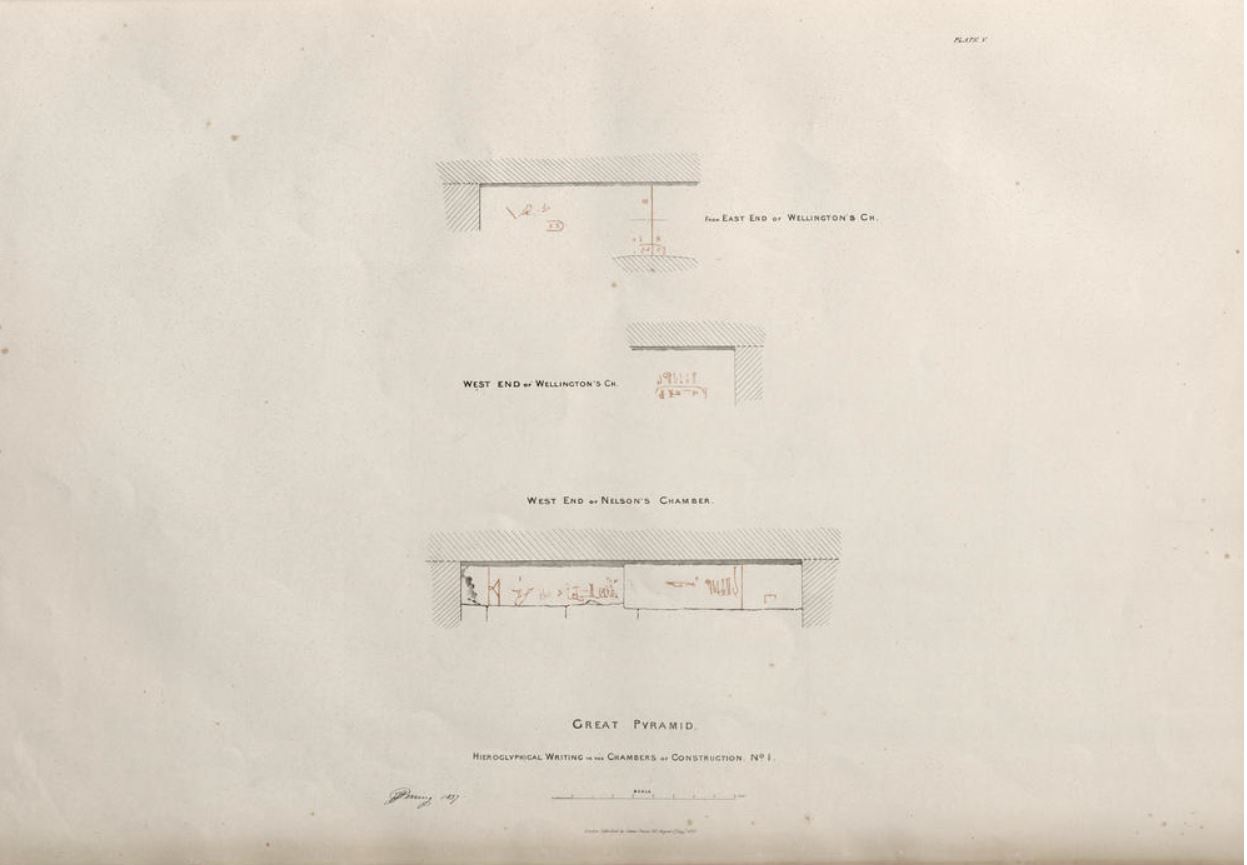
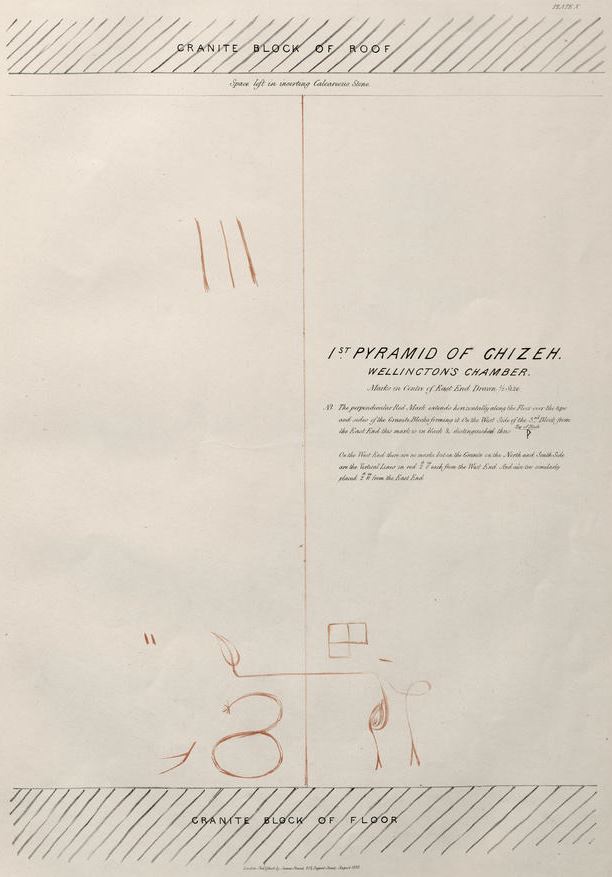
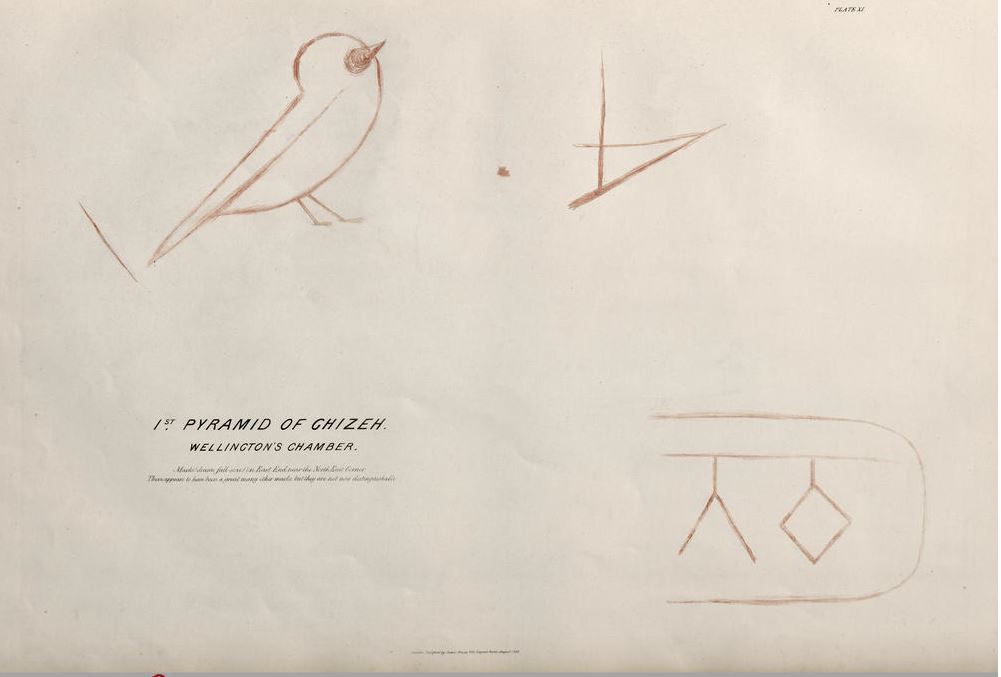
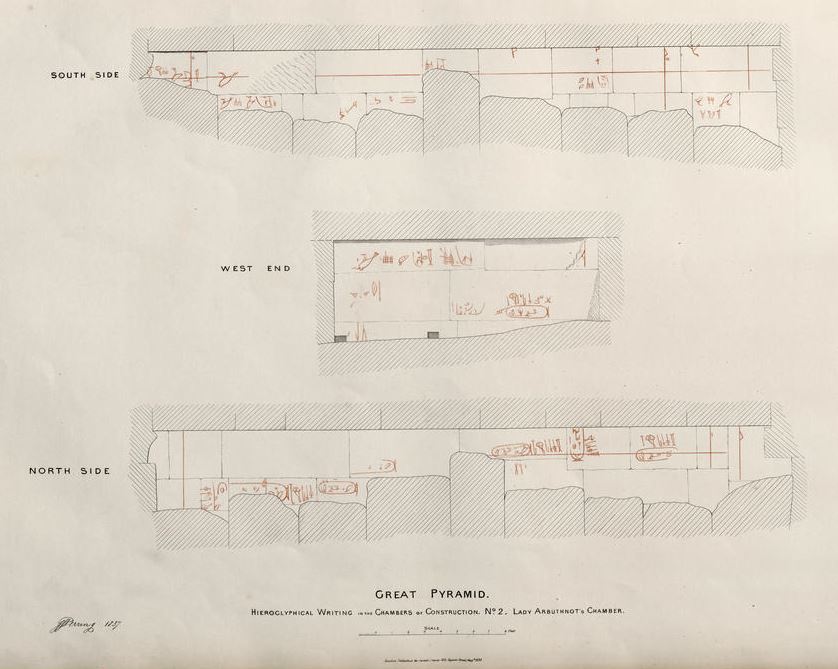
edit on 23/6/22 by Hanslune because: (no reason given)
new topics
-
The good, the Bad and the Ugly!
Diseases and Pandemics: 48 minutes ago -
Russian intelligence officer: explosions at defense factories in the USA and Wales may be sabotage
Weaponry: 3 hours ago -
African "Newcomers" Tell NYC They Don't Like the Free Food or Shelter They've Been Given
Social Issues and Civil Unrest: 4 hours ago -
Russia Flooding
Other Current Events: 5 hours ago -
MULTIPLE SKYMASTER MESSAGES GOING OUT
World War Three: 6 hours ago -
Two Serious Crimes Committed by President JOE BIDEN that are Easy to Impeach Him For.
US Political Madness: 7 hours ago -
911 emergency lines are DOWN across multiple states
Breaking Alternative News: 7 hours ago -
Former NYT Reporter Attacks Scientists For Misleading Him Over COVID Lab-Leak Theory
Education and Media: 9 hours ago -
Why did Phizer team with nanobot maker
Medical Issues & Conspiracies: 9 hours ago -
Pro Hamas protesters at Columbia claim hit with chemical spray
World War Three: 9 hours ago
top topics
-
Go Woke, Go Broke--Forbes Confirms Disney Has Lost Money On Star Wars
Movies: 13 hours ago, 13 flags -
Pro Hamas protesters at Columbia claim hit with chemical spray
World War Three: 9 hours ago, 11 flags -
Elites disapearing
Political Conspiracies: 12 hours ago, 9 flags -
Freddie Mercury
Paranormal Studies: 14 hours ago, 7 flags -
African "Newcomers" Tell NYC They Don't Like the Free Food or Shelter They've Been Given
Social Issues and Civil Unrest: 4 hours ago, 7 flags -
A Personal Cigar UFO/UAP Video footage I have held onto and will release it here and now.
Aliens and UFOs: 12 hours ago, 5 flags -
Two Serious Crimes Committed by President JOE BIDEN that are Easy to Impeach Him For.
US Political Madness: 7 hours ago, 5 flags -
Russian intelligence officer: explosions at defense factories in the USA and Wales may be sabotage
Weaponry: 3 hours ago, 4 flags -
911 emergency lines are DOWN across multiple states
Breaking Alternative News: 7 hours ago, 4 flags -
Former NYT Reporter Attacks Scientists For Misleading Him Over COVID Lab-Leak Theory
Education and Media: 9 hours ago, 4 flags
active topics
-
African "Newcomers" Tell NYC They Don't Like the Free Food or Shelter They've Been Given
Social Issues and Civil Unrest • 6 • : Hecate666 -
Russia Flooding
Other Current Events • 3 • : theatreboy -
Russian intelligence officer: explosions at defense factories in the USA and Wales may be sabotage
Weaponry • 39 • : Kurokage -
-@TH3WH17ERABB17- -Q- ---TIME TO SHOW THE WORLD--- -Part- --44--
Dissecting Disinformation • 520 • : cherokeetroy -
Elites disapearing
Political Conspiracies • 21 • : ntech620 -
Former NYT Reporter Attacks Scientists For Misleading Him Over COVID Lab-Leak Theory
Education and Media • 3 • : Hakaiju -
Two Serious Crimes Committed by President JOE BIDEN that are Easy to Impeach Him For.
US Political Madness • 9 • : Myhandle -
MULTIPLE SKYMASTER MESSAGES GOING OUT
World War Three • 15 • : cherokeetroy -
A Personal Cigar UFO/UAP Video footage I have held onto and will release it here and now.
Aliens and UFOs • 10 • : Hakaiju -
Revolution in advertising: the Russians launched a unique satellite
Science & Technology • 70 • : Kurokage
